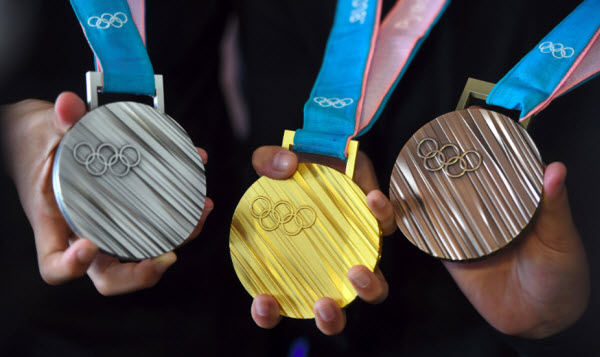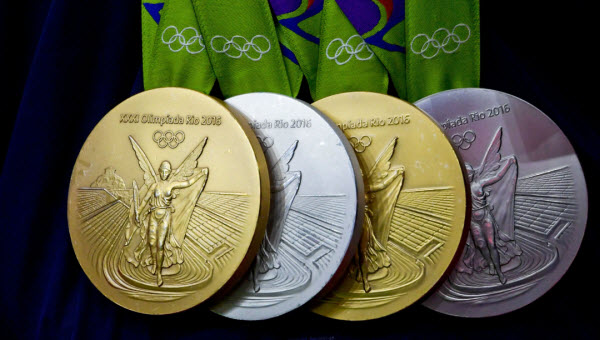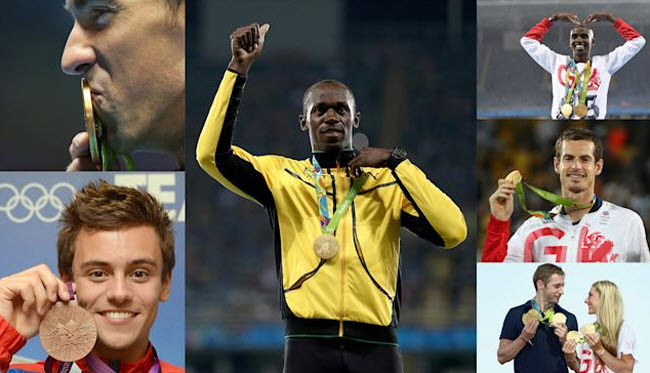Athletes from around the world compete in various sporting events under the banner of the Olympic Games, aiming to surpass their rivals and reach the podium of victory. Winners in these competitions gain not only recognition but also several benefits. In addition to having their names and countries etched into the annals of Olympic history, they receive numerous rewards, some of which are monetary, while others are symbolic, like the Olympic medals awarded to the top three finishers. The athletes are differentiated by the type of medal they receive: the gold for first place, silver for second, and bronze for third. The number of medals won by each country’s athletes determines their ranking in the overall competition, following the official Olympic regulations.

The concept of rewarding winners in the Olympic Games is not new. It dates back to the ancient Greek Olympics, where victorious athletes were honored with an olive wreath. This wreath was crafted from wild olive trees in Olympia, and according to the Greek traveler Pausanias, it was believed to be presented by the god Heracles as a prize for the winner of the running race. Over time, as the modern Olympic Games were launched in 1896, the method of rewarding victors evolved, replacing the olive wreath with Olympic medals. However, no gold medals were awarded at the inaugural Athens Games in 1896. Instead, winners received silver medals and olive branches, while runners-up were awarded laurel branches and bronze or copper medals.

The second edition of the modern Olympics, held in Paris, France, in 1900, was unique for featuring rectangular medals, a deviation from the circular shape we recognize today. In this edition, gold-plated silver medals were awarded to the winners of events like shooting, lifesaving, car racing, and gymnastics. Silver medals were given to second-place finishers in events such as shooting, rowing, yachting, tennis, gymnastics, fencing, equestrian, and athletics. Bronze medals were presented to third-place finishers in gymnastics, fire-fighting, and shooting events. Not all sports awarded medals, as trophies and other awards were distributed in some cases. By the time the 1904 St. Louis Games in the United States came around, a more structured system of awarding medals was in place, with gold, silver, and bronze medals being given to the top three finishers in all events. The International Olympic Committee later retroactively awarded these medals to the top athletes of the previous two Games. In combat sports like boxing, judo, taekwondo, and wrestling, two bronze medals are awarded in each competition, making bronze the most commonly distributed Olympic medal.

The International Olympic Committee (IOC) sets specific criteria for the design and characteristics of Olympic medals. The medals must be circular, accompanied by a ribbon, with a minimum diameter of 6 centimeters and a thickness of 3 millimeters. The gold medal, awarded to the winner, must consist of at least 92.5% silver, plated with 6 grams of gold (valued at approximately $800 as of today). The silver medal must also be 92.5% silver (worth around $460 today), while the bronze medal is composed of 97% copper, 0.5% tin, and 2.5% zinc (with a value of about $5 today). These compositions were updated for the 2020 Tokyo Games, where the bronze medal was made of 95% copper and 5% zinc. Each medal must display the sport for which it was awarded. Until 1912, gold medals were made entirely of pure gold. In the first two Games in 1896 and 1900, the medals were minted in Paris, France, but since then, the host city has taken over the production, including both the design and the manufacturing process. The IOC retains final approval on the design specifications for all Olympic medals, including those for the Summer, Winter, and Paralympic Games. Winter Olympic medals are generally larger, heavier, and thicker than those awarded in the Summer Games.
Over the years, the manner in which Olympic medals and awards were presented varied. However, by the time of the 1932 Los Angeles Summer Olympics, a standardized approach was established. Before 1932, medals were awarded during the closing ceremony, where athletes would wear formal attire and receive their medals from an official. In 1931, the victory podium was introduced under the direction of Henri de Baillet-Latour, who had observed its use in the British Empire Games of 1930. The podium allowed the winner to stand on the highest step, with the second-place finisher to the right and the third-place athlete to the left. This system was first used at the 1932 Winter Olympics and continued at the closing ceremony. For the first time in the Summer Olympics, competitors received their medals immediately after their events, though in the past, athletes had to visit the organizing committee the following day to collect their medals. Eventually, victory podiums were placed at the venues of the competitions themselves.

The 1960 Summer Olympics in Rome, Italy, marked the first time medals were placed around the necks of the athletes, with the medals hung on laurel chains. Today, they are suspended from colored ribbons. When Athens hosted the 2004 Summer Olympics, medal winners also received an olive wreath. At the 2016 Summer Olympics in Rio de Janeiro, Brazil, medalists were awarded a small wooden statue of the Olympic emblem along with their medals.
